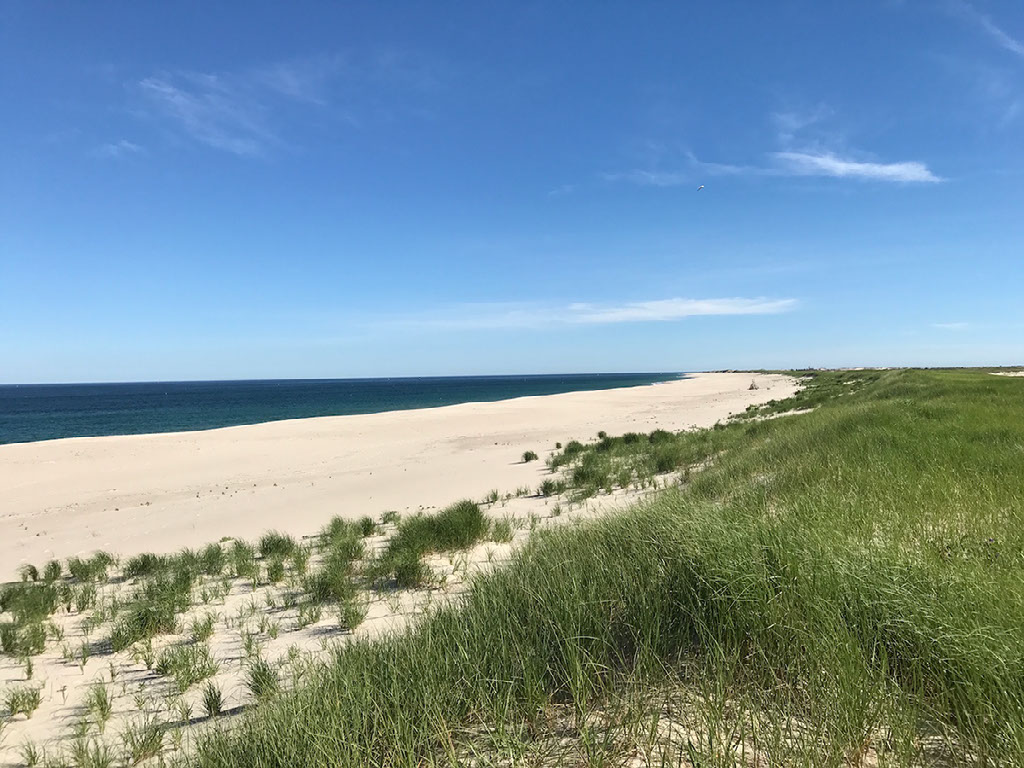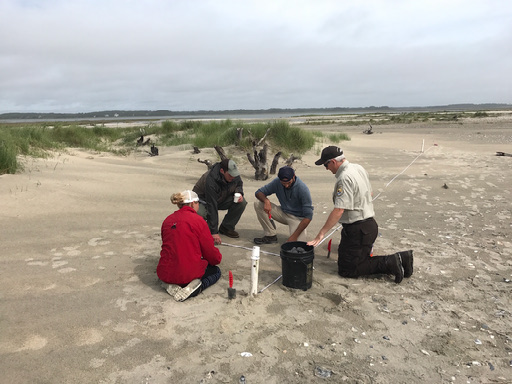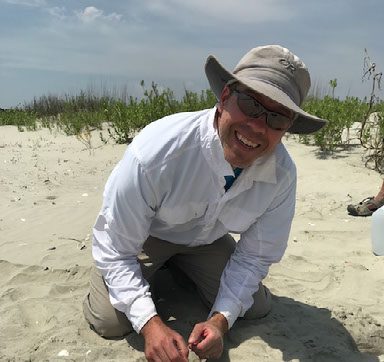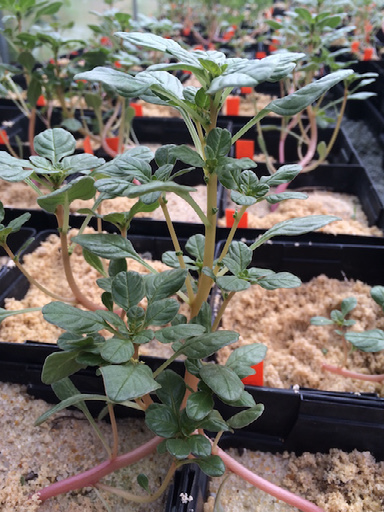Dune Plants Germinating Along the Eastern Seaboard
The North Carolina Botanical Garden (NCBG) is currently working with Seabeach Amaranth (Amaranthus pumilus), a federally threatened species that is severely declining. The species is found on sparsely vegetated beach dunes from South Carolina to New York (historically to Massachusetts). Over a 13-year period, this species declined from over 200,000 plants between 2000 and 2002 to 1,320 recorded plants in 2013, range-wide. This is a 99.5 percent reduction in the number of individuals of this annual species. In partnership with the Fish and Wildlife Service (FWS) with funding from their internal Cooperative Recovery Initiative (CRI), NCBG is working to restore populations of Seabeach Amaranth in National Wildlife refuges throughout the species range. . .
In 2015, NCBG with Dale Suiter and Erin King of the FWS, collected seed from wild populations nearest each reintroduction site. With the species vulnerable to climate change, beachfront property development, sea-level rise, and beach use it was important to collect these seeds to preserve genetic diversity and to provide material for increasing the number of seed available for restoration. A seed increase project was implemented in 2016 as well as trials to refine protocols and planting techniques in order to maximize overall project success. In 2017, 2000 Seabeach Amaranth seeds were planted at each of six National Wildlife Refuges and 2 privately held conservation properties. These included Cape Romain NWR in South Carolina, Chincoteague NWR in Virginia, Cape May and Forsythe NWRs in New Jersey, Nantucket and Monomoy NWRs and two conservation areas in Massachusetts. In selecting the refuges and conservation areas, some of the many threats to this plant were eliminated. The good news? Germination at all locations has been reported. They are monitoring the seedlings until these plants senesce in the fall, and into the future.




